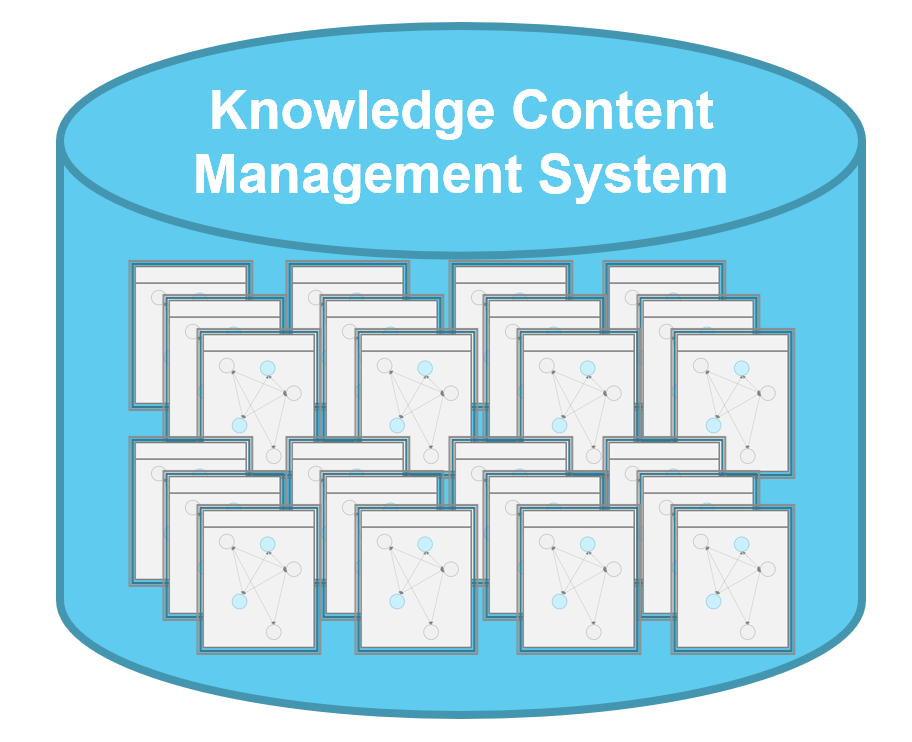This page is part of the Clinical Guidelines (v2.0.0: STU2) based on FHIR (HL7® FHIR® Standard) R4. This is the current published version. For a full list of available versions, see the Directory of published versions
Knowledge representation pertains to the process of progressively structuring and formalizing content for computer interpretation and enablement and details of representing and expressing knowledge is discussed in an entire section dedicated to Knowledge Representation. Here, we will discuss several major implications of knowledge representation to the knowledge engineering lifecycle process(-es) as they go hand-in-hand.
Knowledge curation is the activity of identifying, versioning, indexing, tagging (i.e., adding metadata), and archiving the various artifacts and assets (e.g., representations, formalisms, expression libraries) relevant to the scoped knowledge engineering activity. The primary purpose for knowledge curation is to facilitate search and retrieval of relevant content. This is often done within a knowledge content management system or knowledge base. In supporting large, sophisticated knowledge engineering activities , curation and a content management system or knowledge base becomes an invaluable tool (e.g., as is needed for a specific CPG and for supporting numerous related activities such as multiple CPG’s and/or their derivative assets such as measures, clinical decision support (CDS)). The knowledge content management system serves the function of managing a large corpus of reusable and related content and asset dependencies and providing workflow or decision-support for the knowledge engineers themselves across the knowledge engineering lifecycle process and reusable assets.

Knowledge management has substantive ties to knowledge engineering, knowledge representation, knowledge creation, and knowledge sharing and further extends the broader concept of curation. This becomes critical for managing the numerous interrelated assets of a more substantial CPG or multiple, interrelated CPG’s. Knowledge management refers to the processes, capabilities, and tooling for identifying, organizing, relating, finding, sharing, and reusing knowledge assets (see section on Knowledge Representation). Knowledge assets and knowledge asset metadata are critical features in knowledge management. Knowledge assets are often stored in knowledge content management systems and/or knowledge bases. Findability, reusability, dependency, and relatedness are some of the most critical features of a knowledge content management system and rely heavily on metadata on the assets.
Knowledge asset metadata includes structured information for identifying, classifying, and organizing assets including: versioning, information pertaining to the knowledge engineering lifecycle (status of an asset in its lifecycle), administrative information (e.g. governance), permissioning, information about the content of the asset, the asset’s provenance (derivation or from other representation levels), human readable descriptive information, and information about various kinds of relationships including dependencies, (re-)usage, and similarities/ equivalence (see subsection on Knowledge Asset Metadata in Knowledge Representation). More on the relationship between the Knowledge Architecture and Knowledge Management can be found in the subsection Knowledge Architecture and Knowledge Content Management System.
Further details on how to leverage a knowledge content management system in the Agile CPG Approach can be found in the section on Leveraging a Knowledge Base (Knowledge Content Management System).